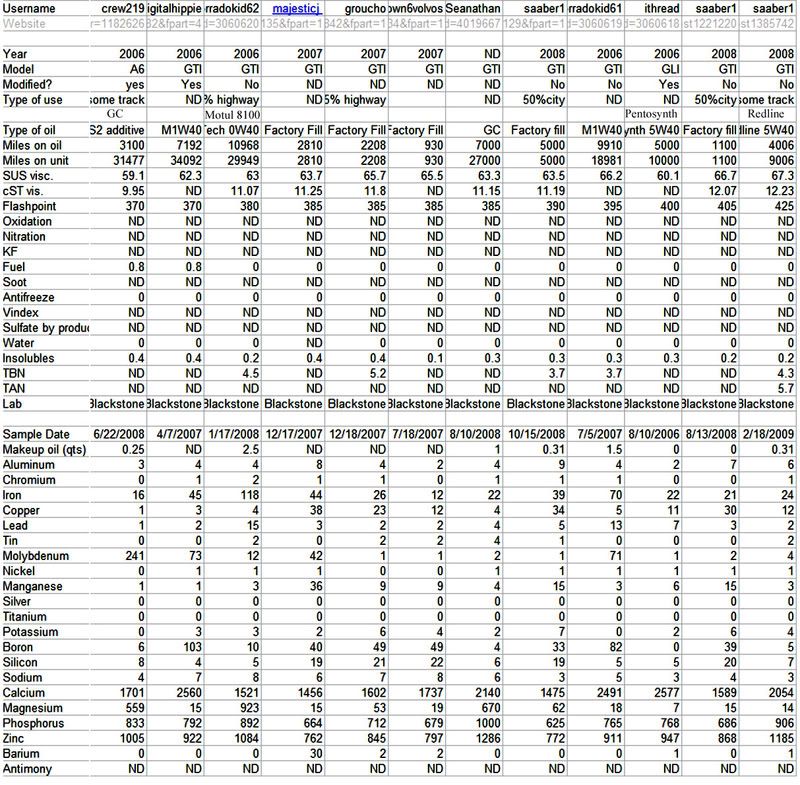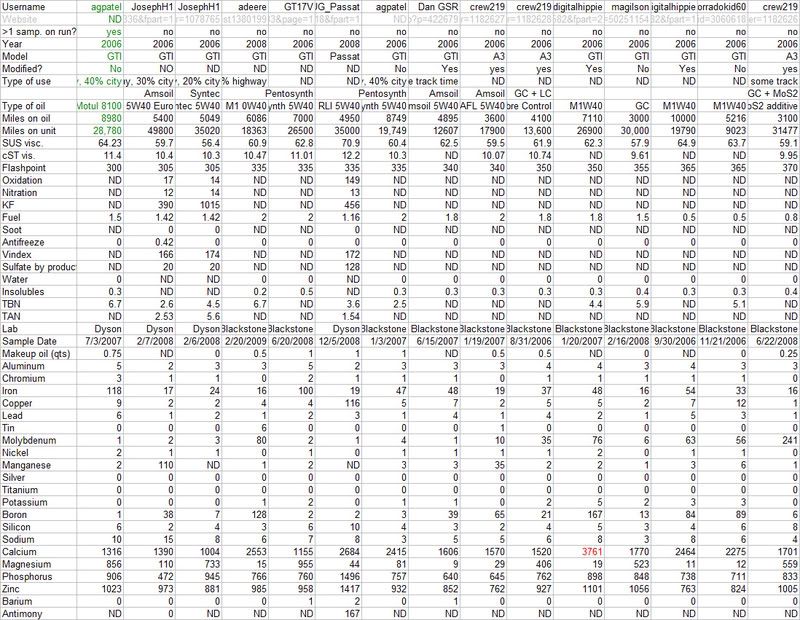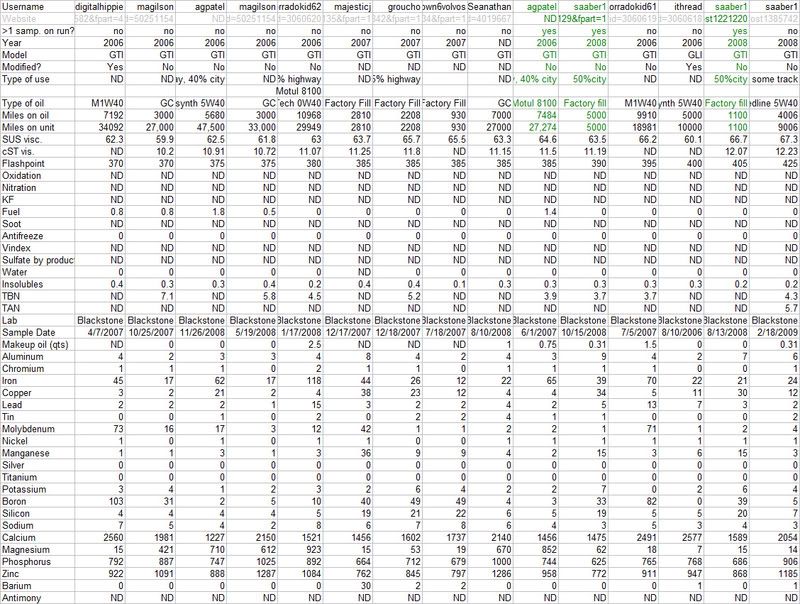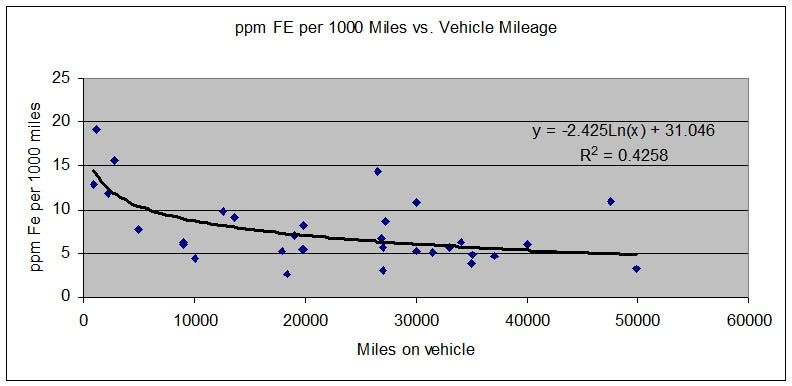Here is a compilation of all the UOAs I could find for the 2.0l FSI engine. This database does not include Veedubb's previously posted UOA database as I could not find the original posts for that data: http://www.bobistheoilguy.com/forums/ubb...true#Post974166 Credit the database idea to RS_RL1 and Veedubb.
My intention here is to post the raw data with no interpretation for others to play with. If you want the excel file so you can re-sort the data, make your own graphs, etc. just send me a personal message with your email and I will send it to you.
One important thing to remember here is this is data from many different units, driving methods, climates, etc., etc. and the population size itself is not statistically significant. Thus this is for "entertainment purposes only" really. It is for fun, not trying to prove a point.
I will post up some graphs later when I get time. Also FYI the database has the original websites where the discussion for original UOAs can be found which may be helpful if you are trying to track down why a certain UOA looks the way it does or if you want to ask a questions to the poster of the original data.
The red text for the calcium number on one spot indicates what I believe to be a typo.


My intention here is to post the raw data with no interpretation for others to play with. If you want the excel file so you can re-sort the data, make your own graphs, etc. just send me a personal message with your email and I will send it to you.
One important thing to remember here is this is data from many different units, driving methods, climates, etc., etc. and the population size itself is not statistically significant. Thus this is for "entertainment purposes only" really. It is for fun, not trying to prove a point.
I will post up some graphs later when I get time. Also FYI the database has the original websites where the discussion for original UOAs can be found which may be helpful if you are trying to track down why a certain UOA looks the way it does or if you want to ask a questions to the poster of the original data.
The red text for the calcium number on one spot indicates what I believe to be a typo.







